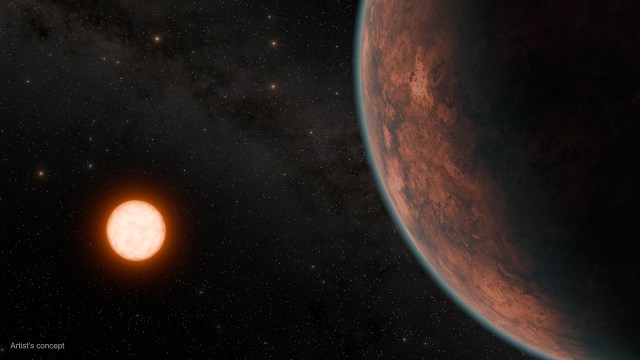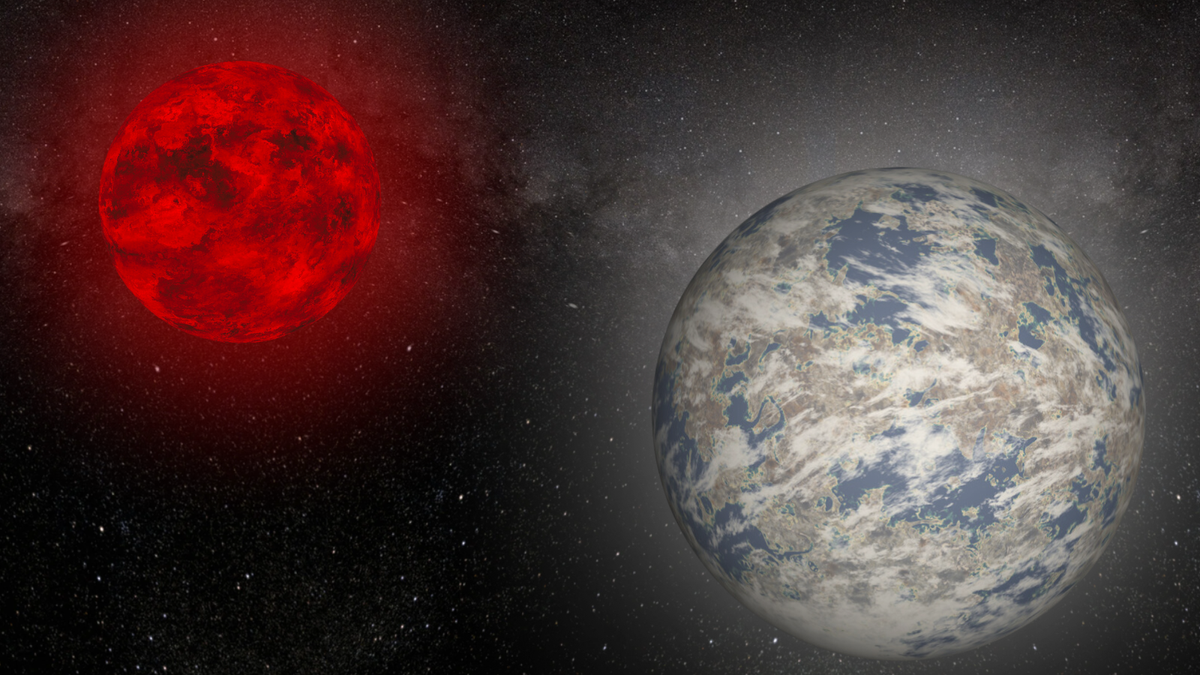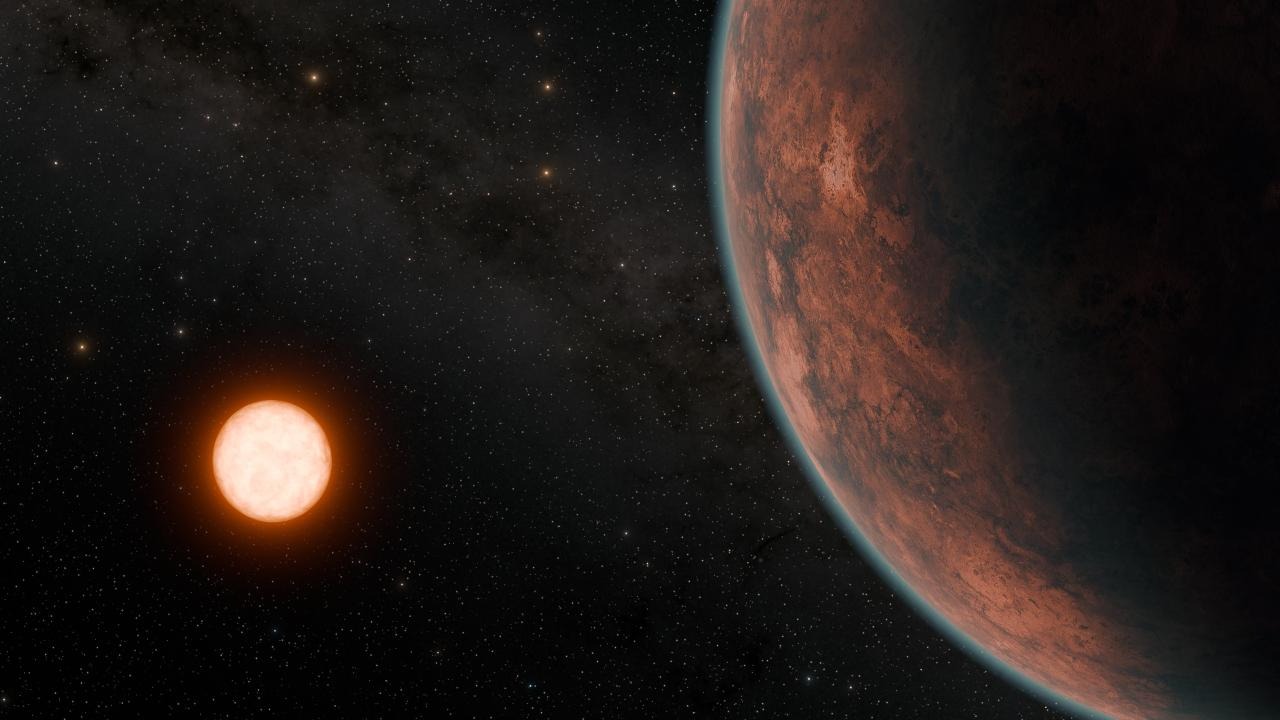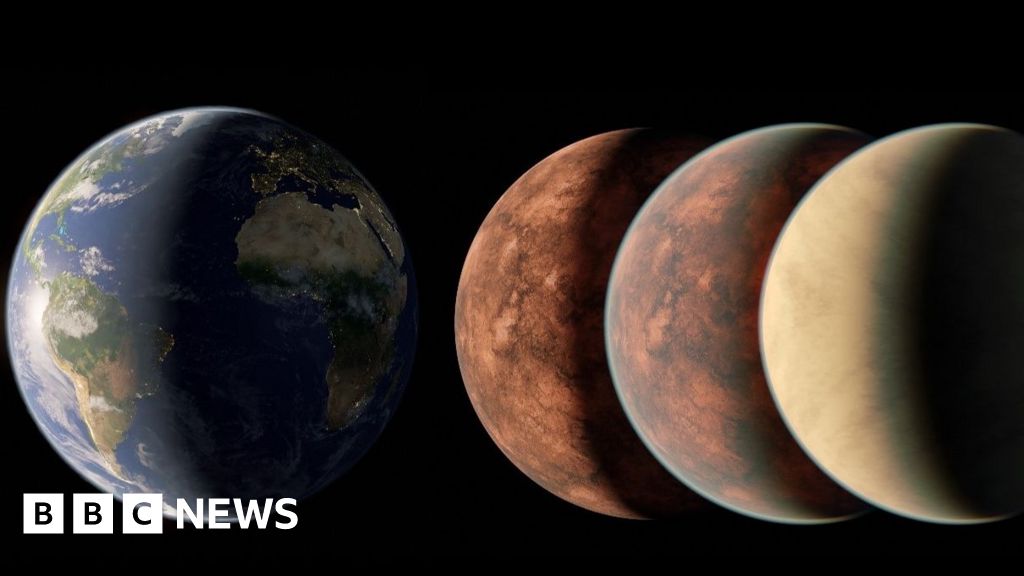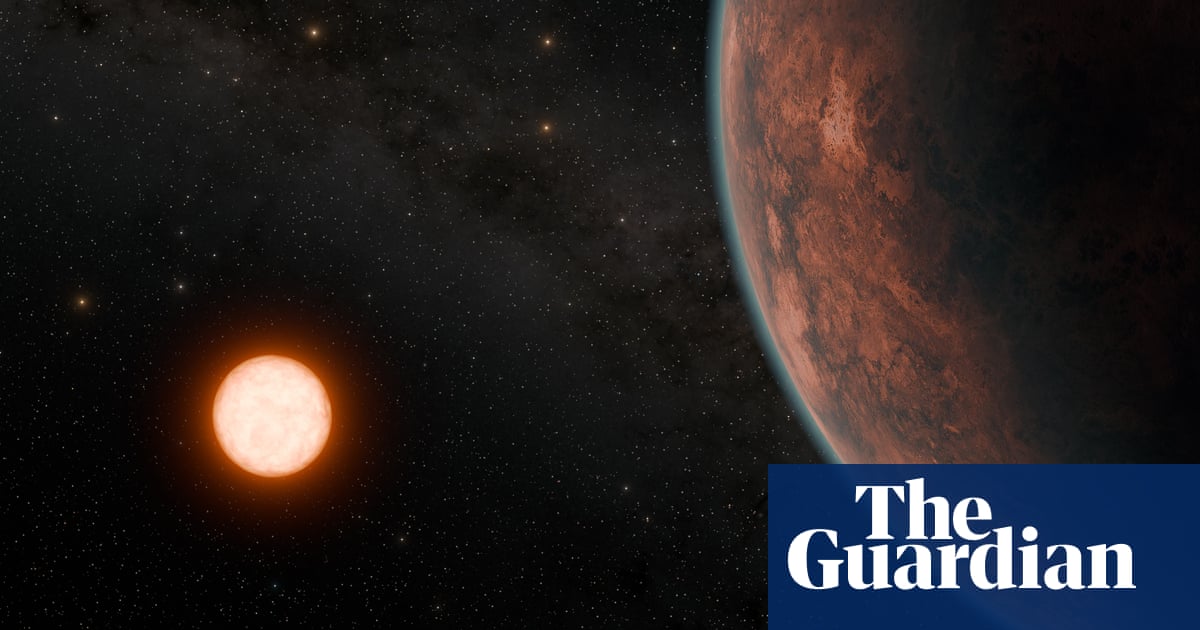A new discovery by NASA’s Transiting Exoplanet Survey Satellite (TESS) has unveiled an Earth-sized exoplanet, Gliese 12 b, located just 40 light-years away in the constellation Pisces. This planet orbits a red dwarf star, Gliese 12 and has characteristics that suggest it could be a candidate in the search for extraterrestrial life.
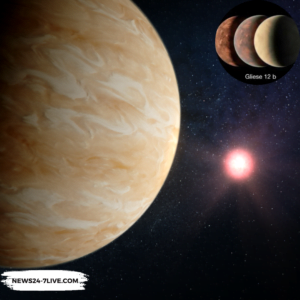
Also Read: WASP-193b: Astronomers Discover the Second Lightest Cotton Candy Exoplanet to Date
The newly discovered planet is named Gliese 12 b. Gliese 12 b orbits a cool red dwarf star, Gliese 12, which is situated almost 40 light-years away in the constellation Pisces. Approximately 27% the size of our Sun. About 60% of the Sun’s surface temperature.
Gliese 12 b completes an orbit around Gliese 12 every 12.8 days. The planet is comparable in size to Earth or slightly smaller, making it akin to Venus in terms of dimensions. The planet orbits at a distance that is just 7% of the distance between Earth and the Sun.
Receives 1.6 times more energy from its star than Earth receives from the Sun. Receives about 85% of the energy that Venus experiences from the Sun.
Assuming Gliese 12 b has no atmosphere, its surface temperature is estimated at around 107 degrees Fahrenheit (42 degrees Celsius). The potential presence of an atmosphere remains undetermined making it a candidate for detailed atmospheric studies.
Smaller stars like red dwarfs cause greater dimming when transited by planets making detection easier. These stars exhibit greater reflex motion due to the gravitational influence of orbiting planets.
The lower luminosity of red dwarfs means their habitable zones lie closer to the star, simplifying the detection of transiting planets in these zones.
The planet’s position between Earth and Venus in terms of temperature and size makes it a subject for understanding planetary evolution and habitability.
Insights from Gliese 12 b could show the atmospheric evolution of Earth and Venus concerning how they retained or lost their atmospheres.
During a transit, the star’s light passes through any existing atmosphere of the planet allowing the detection of various gases by analyzing the light’s chemical fingerprints.
Follow-up observations with the JWST could determine the composition and extent of Gliese 12 b’s atmosphere.
One team was co-led by Masayuki Kuzuhara from the Astrobiology Center in Tokyo and Akihiko Fukui from the University of Tokyo.
Another team was co-led by Shishir Dholakia from the University of Southern Queensland and Larissa Palethorpe from the University of Edinburgh and University College London.
Findings were published in The Astrophysical Journal Letters and Monthly Notices of the Royal Astronomical Society on May 23, 2024.
Also Read: Blue Origin Launches First Crewed Mission Since 2022 Engine Malfunction
An artist’s concept depicts Gliese 12 b with a thin atmosphere, illustrating its mottled red and brown surface softened by atmospheric haze.
Another concept shows Gliese 12 b with a thick, Venus-like atmosphere completely obscuring the surface. Another visual compares Earth with various potential models of Gliese 12 b, ranging from no atmosphere to a thick Venus-like atmosphere.
“We’ve found the nearest, transiting, temperate, Earth-size world located to date. Although we don’t yet know whether it possesses an atmosphere, we’ve been thinking of it as an exo-Venus, with similar size and energy received from its star as our planetary neighbor in the solar system.” said Masayuki Kuzuhara
Shishir Dholakia Stated, “Gliese 12 b represents one of the best targets to study whether Earth-size planets orbiting cool stars can retain their atmospheres, a crucial step to advance our understanding of habitability on planets across our galaxy.”
Larissa Palethorpe stated, “It is thought that Earth’s and Venus’s first atmospheres were stripped away and then replenished by volcanic outgassing and bombardments from residual material in the solar system. The Earth is habitable, but Venus is not due to its complete loss of water. Because Gliese 12 b is between Earth and Venus in temperature, its atmosphere could teach us a lot about the habitability pathways planets take as they develop.”
The exoplanet completes an orbit around its red dwarf star in just 12.8 Earth days. Despite its close proximity to Gliese 12 which is only about 7% of the Earth-Sun distance, the planet remains in the star’s habitable zone due to the star’s cooler temperature.
The habitable zone is often called the “Goldilocks Zone,” is the region where conditions might be right for liquid water.
Gliese 12 b’s surface temperature is estimated to be around 107 degrees Fahrenheit (42 degrees Celsius), cooler than Venus, which has surface temperatures around 867 degrees Fahrenheit (464 degrees Celsius).
Also Read: SpaceX Launches First Batch of Next-Generation Spy Satellites for NRO
Preliminary research suggests Gliese 12 b may have a thin atmosphere, similar to Earth’s. If the planet lacks a thick hydrogen atmosphere, this could be favorable for habitability.
Thick atmospheres of hydrogen are generally detrimental to the development of life as we know it.
Red dwarfs like Gliese 12 are the most common type of star in the Milky Wa, comprising 60% to 70% of the galaxy’s stars.
These stars are much smaller and cooler than the Sun, burning at around 6,380 degrees Fahrenheit (3,500 degrees Celsius) compared to the Sun’s 9,900 degrees Fahrenheit (5,500 degrees Celsius).
Red dwarfs have longer lifespans sometimes extending to trillions of year, providing ample time for life to potentially develop on their orbiting planets.
Red dwarfs can be highly magnetically active emitting powerful flares that could strip planetary atmospheres.
Even relatively calm red dwarfs can occasionally erupt with superflares much more intense than those from the Sun.
TESS detected Gliese 12 b using the transit method observing the tiny dips in starlight as the planet passes in front of its star.
The next step involves using the radial velocity method to determine the planet’s mass more accurately.
The research team plans to use the High Accuracy Radial velocity Planet Searcher for the Northern hemisphere (Harps North) and the European Southern Observatory’s ESPRESSO instrument for further observations.
The James Webb Space Telescope (JWST) could play a crucial role in examining Gliese 12 b’s atmosphere. During a transit, the starlight passing through the planet’s atmosphere can reveal the presence of various elements.
This technique is known as transmission spectroscopy that will be employed to study Gliese 12 b, much like it is being used for the TRAPPIST-1 system, another group of Earth-like planets around a red dwarf.
Also Read: Koleken Inakayali: New Dinosaur Species with Tiny Arms Discovered in Patagonia

